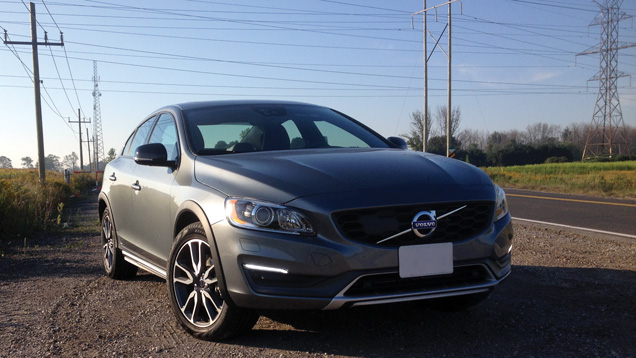Motoring: An SUV dressed up like a sedan
 CREDIT: NAUMAN FAROOQ
CREDIT: NAUMAN FAROOQThe 2016 Volvo S60 Cross Country rides just like an SUV with its 2.5 inch addition in height to the previous model.
The automotive market place seems to be forever expanding, and customers are now demanding more from their vehicles than ever before.
With the need to constantly invent new genres, Volvo decided to go in a direction that none of its competition had bothered diving into, and that is with their new sedan that has off-road capabilities like an SUV.
Meet the new 2016 Volvo S60 Cross Country.
The Cross Country (CC) name is not new to Volvo, having first used it on a military vehicle back in 1974. For its civilian vehicles, the first model to have a CC badge was the V70 from 2003.
Ever since, Volvo has used the CC badge on a number of vehicles, but they’ve all been wagons. Now, with the introduction of the S60 CC, it appears for the first time on a sedan.
One of the largest differences of this car is the height, as the S60 CC sits about 2.5 inches higher than the standard model.
Couple that height with all-wheel drive and rugged body mouldings and you really have an SUV dressed up as a sedan.
The increased ride height also has other advantages. I live near the farmlands in London and therefore many roads are broken and have large bumps. Thanks to its tall stance, the S60 CC has no problem grounding out and scraping its underside.
Though this car has many benefits, not every part of the car is perfect.
The biggest issue with the vehicle is its damping. On the highway, it rides beautifully, just as what you’d expect from a luxury sedan. But over ruts and bumps, the taller suspension with stiffer dampers does give you a bone-jarring ride. It might be capable of going where no sedan has gone before, but you wouldn’t want to go there anyway, given its ride.
Then, there is the issue with its drivetrain. Unlike the new and wonderful XC90, the S60 CC does not get Volvo’s latest and greatest Drive-E engines and gearbox. Instead, it has the old 2.5-litre, five-cylinder, turbocharged motor that produces 250 horsepower and 266 pounds per foot of torque.
Power is fed to thewheels via a six-speed automatic gearbox; while this is a decent gearbox, it is nowhere near as good as the new eight-speed gearbox found in the new XC90.
Apparently, the S60 CC can sprint from zero to 100 kilometres per hour in just 6.6 seconds, but the car never felt that quick.
The biggest let down was with the rather small trunk; it is only big enough to carry an extra tire and is therefore not as practical as you might have hoped.
Nor is it the most efficient vehicle on our roads today. During my test drive, I consumed 13.6 litres of petrol in the city for every 100 kilometre of travel.
However, it does relax at highway speeds and therefore my city and highway combined figure of 10.6 litres per 100 kilometres is not bad.
The highway is actually the best place for the S60 CC, because it rides well and its fuel consumption is good.
I also got to use one of this car’s best features on the highway; its active cruise control. While lots of vehicles now offer this feature, the Volvo’s system is the best by a mile.
It detects other cars quickly and reacts accordingly by keeping a safe distance between them and yourself, and when you change lanes, it picks up speed to make the maneuver safe and quick.
Speaking of safe, like all Volvo’s, the S60 CC is one of the safest cars on the roads.
If the idea of a hopped-up sedan is appealing to you, then you’ll need to part with at least $49,450 to bring one home. I just hope that the roads in your area are smoother than the ones near mine.













